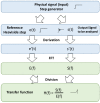Toward Improvements in Pressure Measurements for Near Free-Field Blast Experiments
- PMID: 37420801
- PMCID: PMC10300996
- DOI: 10.3390/s23125635
Toward Improvements in Pressure Measurements for Near Free-Field Blast Experiments
Abstract
This paper proposes two ways to improve pressure measurement in air-blast experimentations, mostly for close-in detonations defined by a small-scaled distance below 0.4 m.kg-1/3. Firstly, a new kind of custom-made pressure probe sensor is presented. The transducer is a piezoelectric commercial, but the tip material has been modified. The dynamic response of this prototype is established in terms of time and frequency responses, both in a laboratory environment, on a shock tube, and in free-field experiments. The experimental results show that the modified probe can meet the measurement requirements of high-frequency pressure signals. Secondly, this paper presents the initial results of a deconvolution method, using the pencil probe transfer function determination with a shock tube. We demonstrate the method on experimental results and draw conclusions and prospects.
Keywords: blast experiment; close-in detonation; deconvolution; dynamic calibration; metrology; near-field experimentation; pressure sensors; shock tube; transfer function.
Conflict of interest statement
The authors declare no conflict of interest.
Figures
















References
-
- Walter P.L. Air-blast and the science of dynamic pressure measurements. Sound Vib. 2004;38:10–17.
-
- Lukić S., Draganić H., Gazić G., Radić I. Statistical analysis of blast wave decay coefficient and maximum pressure based on experimental results; Proceedings of the RISK/SAFE 2022; Rome, Italy. 12–14 October 2022; pp. 65–78.
-
- Silver P.L. Blast Overpressure Measurement for CFD Model Validation in the Development of Large Caliber Gun Systems. U.S. Army Aberdeen Test Center, Ballistics Instrumentation; Aberdeen, MD, USA: 2006.
-
- Showalter B. Utilization of Pencil Probes in Blast Experiments for the Explosive Effects Branch. DEVCOM Army Research Laboratory; Adelphi, MD, USA: 2020.
-
- Dvořák P., Hejmal Z., Dubec B., Holub J. Use of Pencil Probes for Blast Pressure Measurement; Proceedings of the 2021 International Conference on Military Technologies (ICMT); Brno, Czech Republic. 8–11 June 2021; pp. 1–4.
MeSH terms
LinkOut - more resources
Full Text Sources
Research Materials

